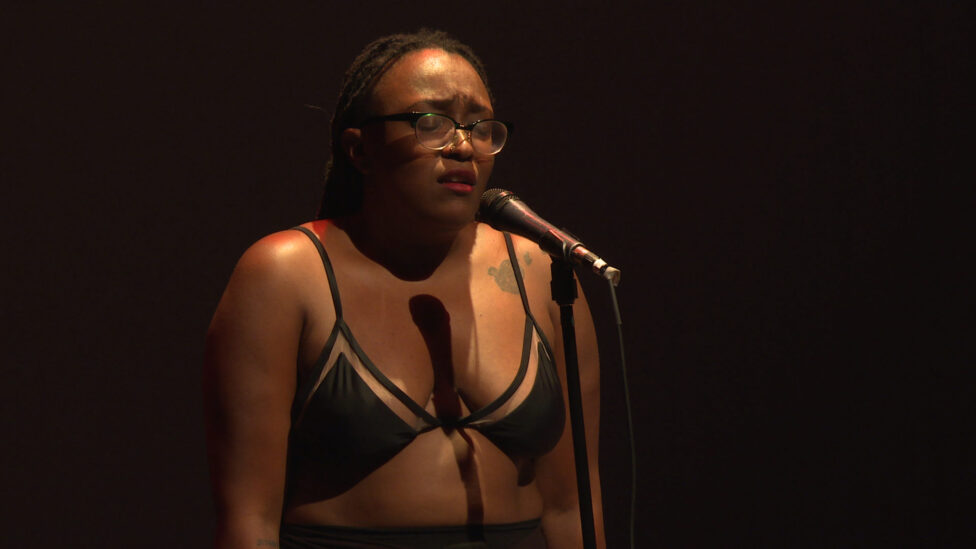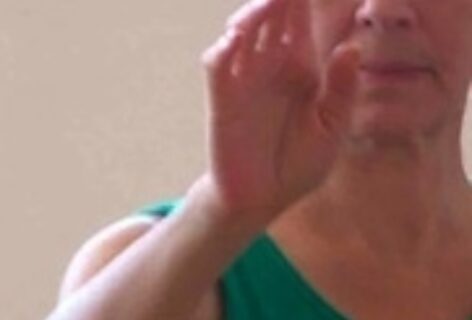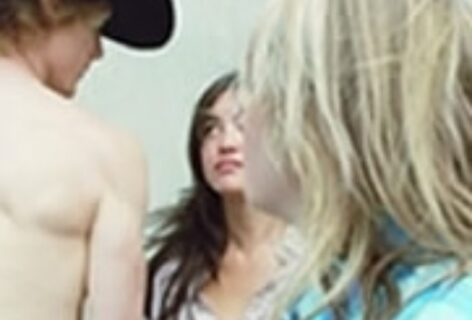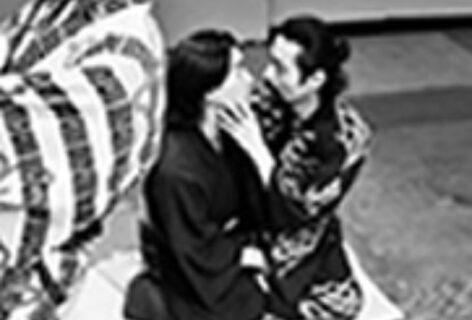Each
year as part of the Bridge Project, Hope Mohr Dance hosts a series of
multi-disciplinary performances, workshops, and panels to highlight
where dance is already in conversation with theory, politics, and
activism. Conceiving of “curating as a form of community
organizing,” Mohr describes the Bridge Project in terms of the
relationships it fosters—in particular, relationships between
“artists and activists in the struggle toward equity.” This
year’s programme, Radical
Movements: Gender and Politics in Performance,
included Monique Jenkinson & Judith Butler, boychild & Jack
Halberstam, Lisa Evans of Peacock Rebellion, Maryam Rostami, and
Julie Tolentino with her collaborators in the Community Engagement
Residency Amara Tabor-Smith, Larry Arrington, Xandra Ibarra, and
Maurya Kerr, joined by Debra Levine and Scot Nakagawa.
Conversations
like these can be galvanizing in this political moment, but they can
also fall out of memory all too quickly as we move to organize and
resist. Because so many of these performances were concerned with the
marking of time, and because we were moved by the urgency in Radical
Movements,
now we attempt to make space for remembering what happened. So we
ask, What
can happen in two weeks?

photo:
Judith Butler holding Monique Jenkinson’s head, photo by: Julian Carter
In
the opening conversation, “Ordinary Practices of the Radical Body,”
Judith Butler and Monique Jenkinson danced onto the CounterPulse
stage under the giddy whirling of a disco ball. Recounting their own
histories of dance and gender, Butler and Jenkinson produced a score
that centered vulnerability and touch while allowing for
improvisation. By “helping each other to persist,” as Butler
said, we can create more conversational choreographies—embodied
dialogues that reflect how we lean, pull, and support each other. At
one point, Jenkinson introduced Butler to one of her own “ordinary
practices”: one person rests on the floor, and the other holds the
full weight of her head, cradling the base of the skull. Small
rituals like this opened up space to discuss “how the body
theorizes,” how to “share weight,” and, overall, how to move
against the norm that says dancers dance and academics think.
“And
how did you become a theory queen?”
Butler playfully asked Jenkinson. In order to answer the question—who
becomes a theory, or a queen, or both, and how?—they swerved into
storytelling. Butler confessed that as a young person she had wanted
to be “either a philosopher or a clown,” and Jenkinson reminisced
about her years in ballerina drag.
Both
Butler and Jenkinson were undergraduates at Bennington, it turns out,
but by the time Jenkinson was reading Irigaray, Butler was spending
the summer in New York with Wendy Perron (now Dance
Magazine’s
Editor-at-Large), who was then dancing for Trisha Brown. Perron and
Butler would pick a fancy restaurant, plaster themselves to the
windows, and slide dramatically down the glass, like slow-motion
roadkill. “We would wait to see if the good bourgeois people were
alarmed,” Butler said. (They weren’t.) These “choreographies of
collapse,” as Jenkinson called them, lead to the floor. And so both
Butler and Jenkinson fell to the marley—“‘cause if you kept
going in those shoes, girlfriend…” Butler remarked when Jenkinson
kicked off her heeled boots—and then rested there, their bodies
stilled. They talked together in that state of rest: fascia, the
pelvis, the pain of joints.
The
conditions of the everyday—including those that “make mobility
possible for some,” as Butler pointed out—can determine so much
of where our bodies can take us. At the end of the two weeks, the
final performance looked back on this beginning, with Debra Levine
remarking, “60,000 people marched in a Nazi demonstration in Poland
this week. [Judith Butler] got denounced and screamed at in Brazil
this week by the religious right. Last week she was here, talking
about dancing in the street.”
When
do we sing, and when do we fight?
Before
anyone has spoken, boychild stands like a boxer at the edge of a dull
ring of light on stage. She throws a shoulder forward, cagey and
light, and then twitches it back fast. Her hands pulse, as if her
fingertips were enunciating something electrical. In the absence of
words, in the presence of rhythm, the deconstructed fight that
boychild throws herself into demands a concentration of breath. There
is an intensified silence where we are enveloped into the complex
space of these small movements. The effort seems to emerge from
shifting impulses: to construct and demolish, to work and to dance,
to perform art or to return to basic physical response. Through the
lens of the conversation with fan Jack Halberstam, boychild’s
experimental drag challenges the boundaries of the body and remixes
conventional drag repertoire with futuristic technologies.
The
drag toward the self is rarely considered as as a labor of ordinary
practices: breathing, warming up, moving over, turning back.
boychild’s miniscule movements become extravagant world-making—“a
rehearsal for the future,” as program notes called it. In Lisa
Evans’ solo performance, You
Really Should Sit Like a Lady (or how I got to femme),
the drag towards selfhood was staged through embodied anthems of
resistance. Evans’ storytelling overlaid a soundtrack of Motown,
R&B, and Evans’ own live mixing of vocal performance. The
attention to sound—and how it can produce collective identity, new
selves, and political movements—draws on Evans’ experiences as a
multi-disciplinary artist and community organizer with Peacock
Rebellion in Oakland.
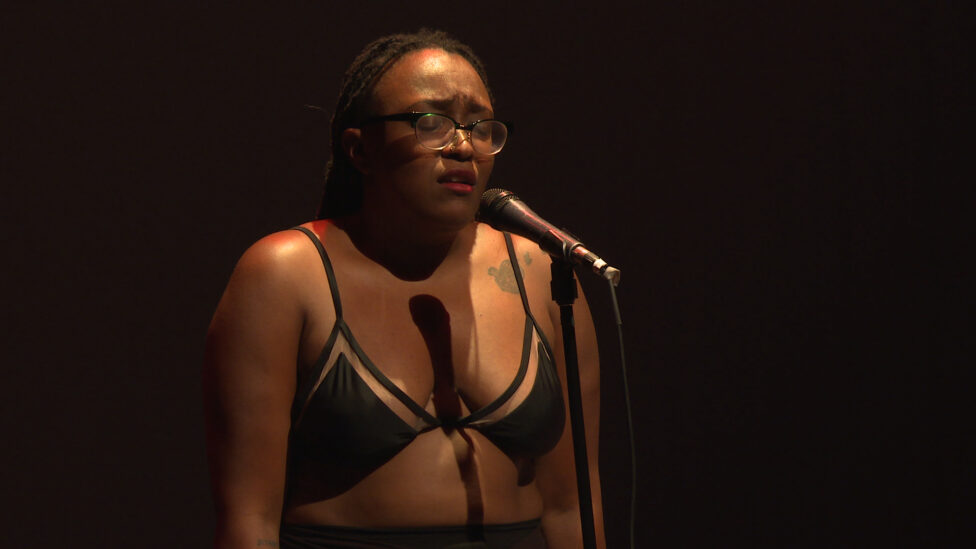
photo: Lisa Evans in the 2017 Bridge Project, photo by: Jacob Marks
As
they philosophized on the power and the pain of growing into oneself,
Evans transformed into and out of a series of femme and Black
avatars. Their opening line (“I always thought femme was just a
queer version of ‘lady’–another thing I could never be”)
established the struggle for identity within an intersectional frame.
“It always begins with the circumference of my wrist,” Evans
announced, introducing us to their father, a black belt in taekwondo,
who obsessively trained them from an early age. In a pointed revision
of this training, Evans brought the audience to its feet, teaching us
a self-defense move that requires synchronized movement to free the
wrist. In its incorporation of song and fight, Evans’ revolutionary
lyricism dramatized the urgent movement toward becoming.
When
does surface become depth?
At
the gate of a summer-house outside of Tehran, Maryam Rostami
remembers in her solo Untitled
1396,
her mother and grandmother stood watching a procession of worshippers
as they walked through the streets. “Bitter, urgent tears” ran
down their faces, and their backs were flecked with blood: their
bodies were marked by grief. But the grieving—the weeping, the
flagellation, the mass of mourners—was for a death from centuries
ago. “How can you be so upset about something that happened 1300
years ago?” she asked the audience. How can you reflect the past on
the surfaces of your present body?
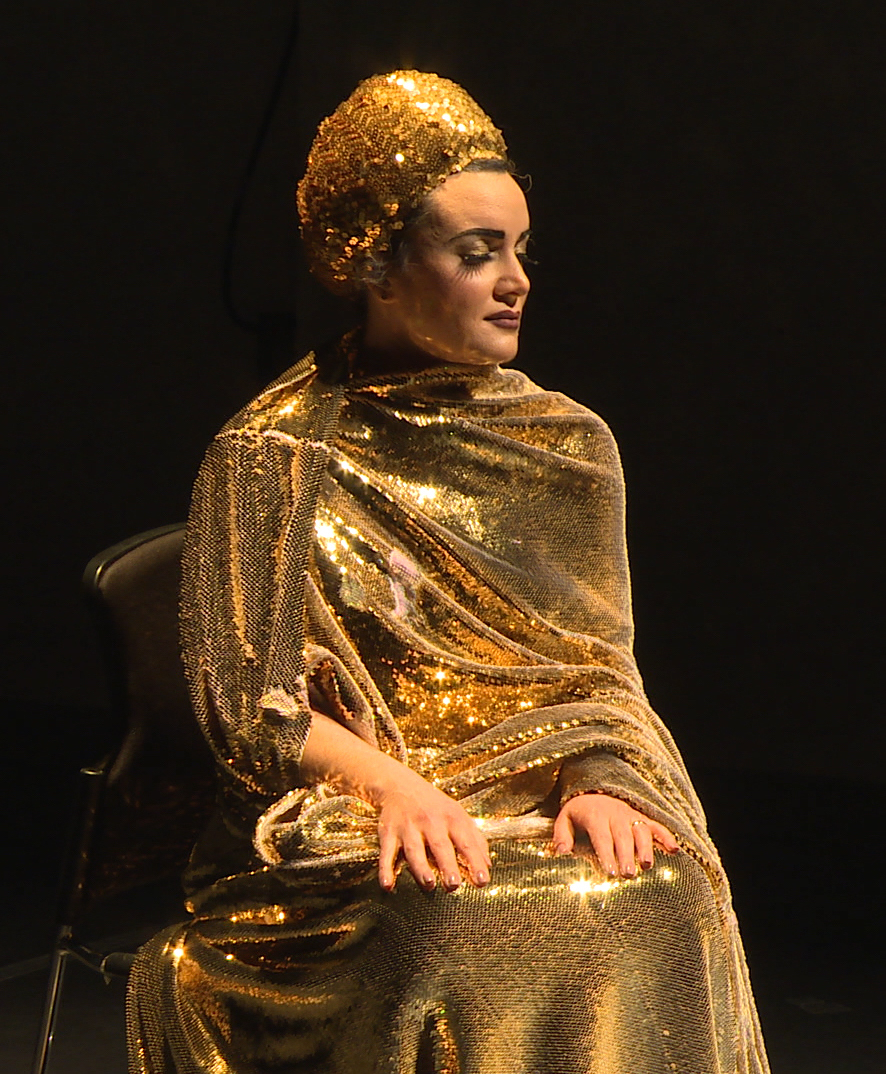
Photo: Maryam Rostami in the 2017 Bridge Project, photo by: Jacob Marks
In
a folding chair set so far downstage that her black silk
dressing-gown almost brushed the knees of people in the front row,
Maryam Rostami began to teach us how to cry. First, you make a slope
of the sides of your eyebrows; then, flattening the nose, flaring a
little in the nostrils, bowing and rounding out the lips; finally, a
beautiful welling at the lower eyelid, a single tear gathering
itself. You let the breath catch in your throat. But, as in lipsync,
the body doesn’t produce its own
expression: the body makes a surface.
In
the stage-light, that surface reflects all of the ways that bodies
are inscribed. Rostami was twelve years old, that year in Tehran; it
was her first time wearing a hijab. She recalled the feeling of
“fitting in”—of being wrapped in the fabric, with its
unambiguous gendering. Draped over her body, a gleaming golden sheet
stood in for the hijab, for the disjunction of years across
calendars, for the impossible space of time. How to make your face
cry: all of these structures and surfaces collude to produce a single
tear.
How
do we get to radical intimacy?
Entering
the Joe Goode Annex on the closing day of the Bridge Project was a
return to the hive. Attendees entered and left in a continuous stream
during the three-hour piece, while Julie Tolentino, Larry Arrington,
Xandra Ibarra, Maurya Kerr, and Amara Tabor-Smith offered their
“performance-in-practice installation,” which unfolded across a
shifting landscape of evolving activities. A.U.L.E.—an
un-named lived experience
explored nearly every surface of the annex. Tolentino’s old
friends, Debra Levine and Scot Nakagawa, provided live reflection
that swept in and out of conversation,
their words projected on facing corners of the room.
“Are
we at Party City?” Levine typed, riffing on the black balloons that
were being repurposed into a kind of companion body by Kerr. Over
near the entrance, Arrington was building a decomposing garden from
string and dried flowers. In the opposite corner, performers and
audience members rifled through a pile of slides over a square light
table. When the bodies of the four dancers came together, they
tangled. Kerr was bundled up like a chrysalis and dragged across the
stage, the points of her elbows poking upwards, a butterfly in a body
bag. Ibarra leaned over Arrington, chin to chin, jawing her mouth
open and closed in wordless dialogue. In the last part of the piece,
the four dancers retreated together to the back wall, where a swath
of butcher paper had been laid down. They entwined like a swarm on
the paper, rolling and falling. As they were moving, they took up
black chalk and began tracing the chaotic outline of their massed
bodies.
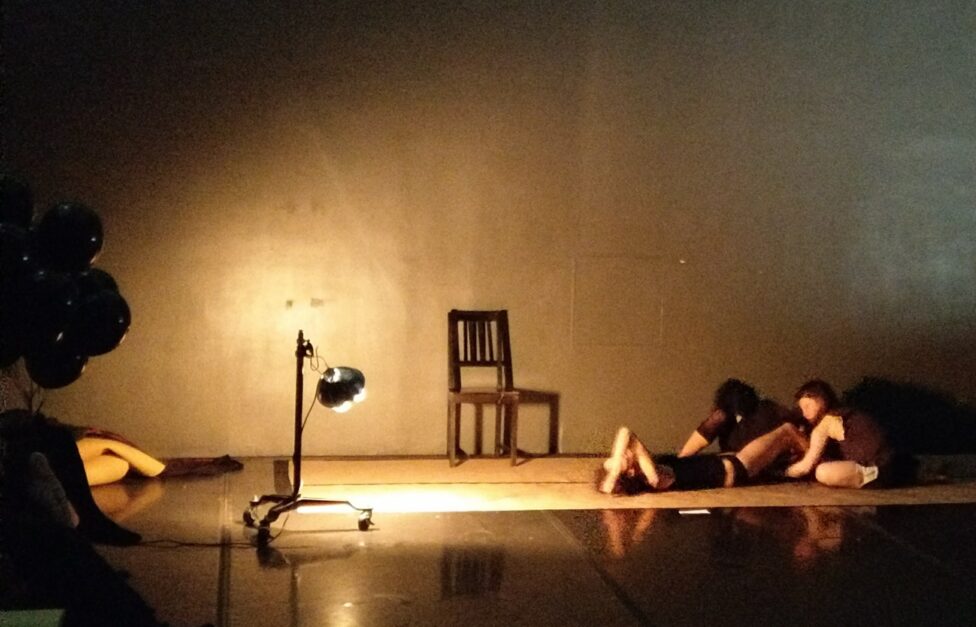
Photo: A.U.L.E. in the Bridge Project 2017, photo by: John Hill
A.U.L.E.
devised a shared processing space for recentering, reconceptualizing,
reintegrating. From inside the work, Levine mused, “I think of
Julie as mapping out an entire environment so that everyone is aware
of the terms of their engagement.” The floor light became a
microphone for Tabor-Smith; the slides became a singular mess rather
than a collection; our own bodies were animated as fixtures within
the space, especially when Tolentino layered mirrors, plastic, and
fabrics over the audience near the end of the piece. The scale felt
both epic and miniature, a cascade of gestures across aural,
physical, and visual landscapes. Their active deconstruction of the
collective became an invitation toward a next communal form.
In
the Q&A, the artists discussed their cultivation of intimacy in
practice, putting virtuosity and training in the service of “the
possibility of generosity with each other,” as Kerr explained.
“Technique is overrated,” Tabor-Smith declared, “and connection
is underrated.” In their exploration of relations between objects,
each other’s bodies, and performance and practice, they were
seeking a center that only appeared at the edges, where forms
overlapped. “We were focusing on the periphery of everything,”
Ibarra said afterwards. The unnamed experience, too, suggested that
first, the social bonds are formed, and then we make things from
those relations. Levine and Nakagawa, perhaps unknowingly, provided a
back catalog of all of the things Tolentino has made from community,
as they remembered their own histories of AIDS activism and
care-taking with her.
The
Bridge Project reimagines and even celebrates conversation as a form
that brings us body to body. What can we do, together, with the
bodies that we have? And what can we do with the bodies that we have
together? At the conjured intersections between different ways of
doing, these collaborations suggest how we can tend to the queer
bonds between bodies and ideas. Radical movements, both physical and
political, sometimes remain in the realm of the airy, the ideational,
the abstract; they only become movements when you do what you say. In
both cases, there is risk; in both cases, there is togetherness.

